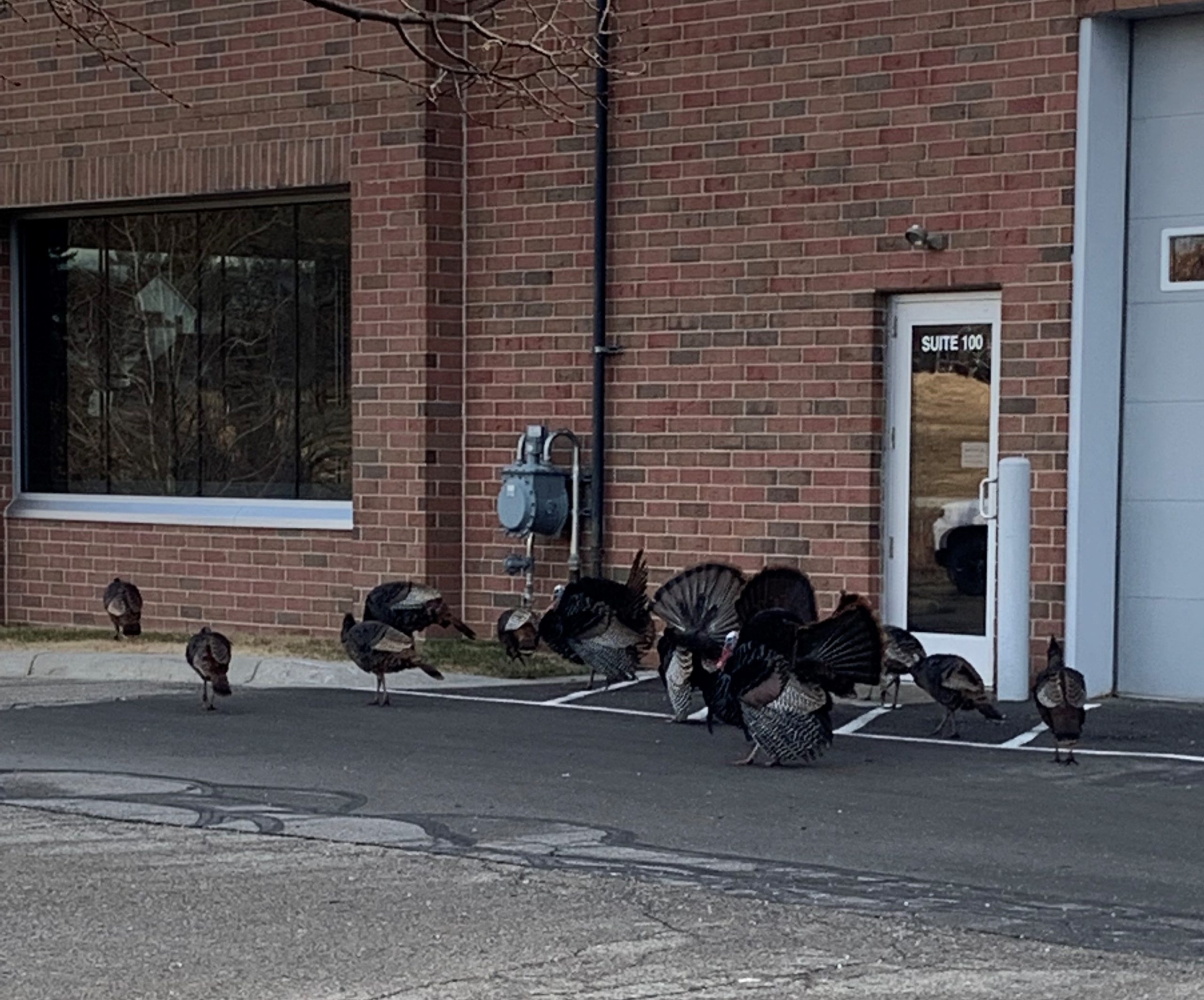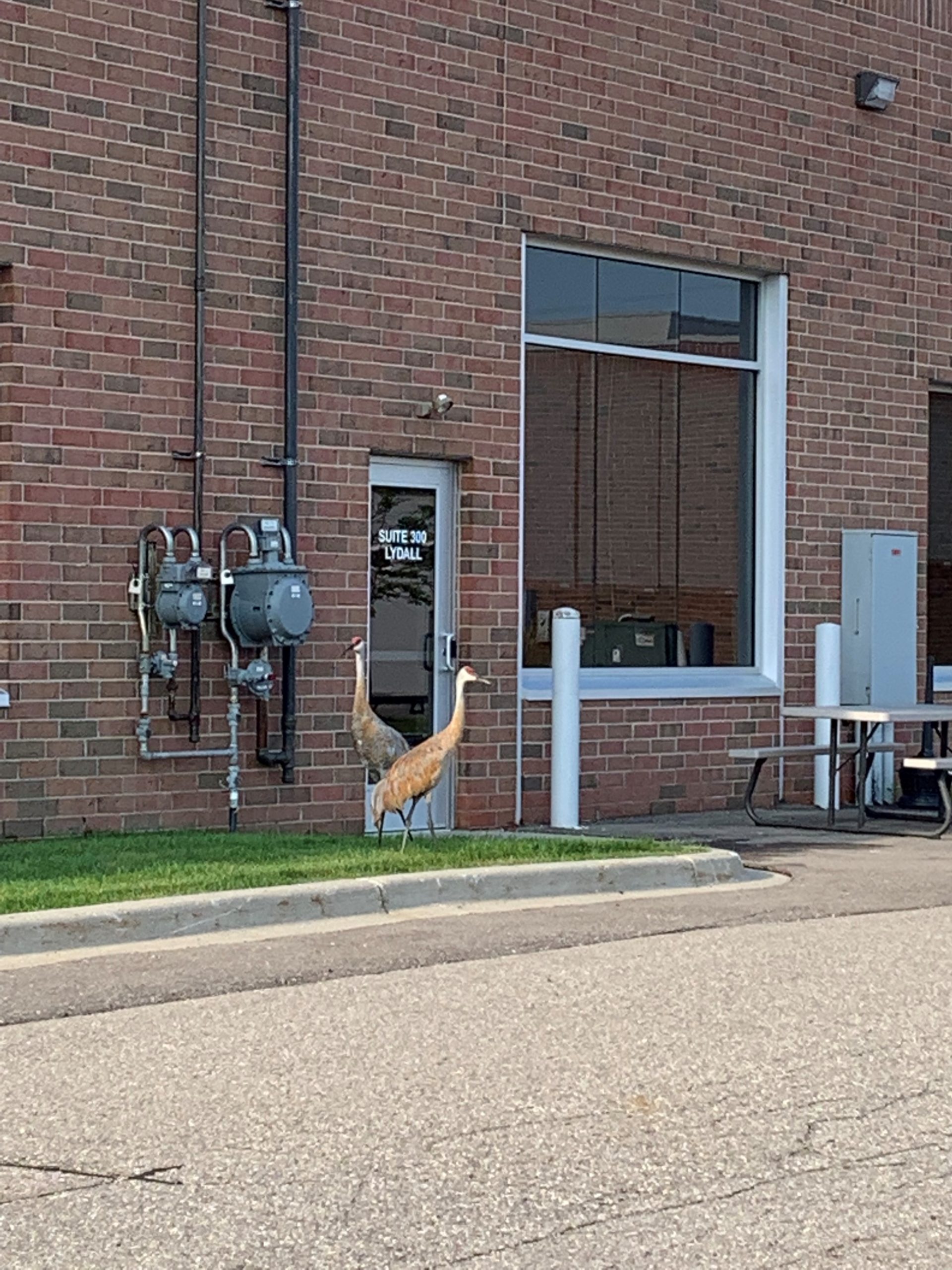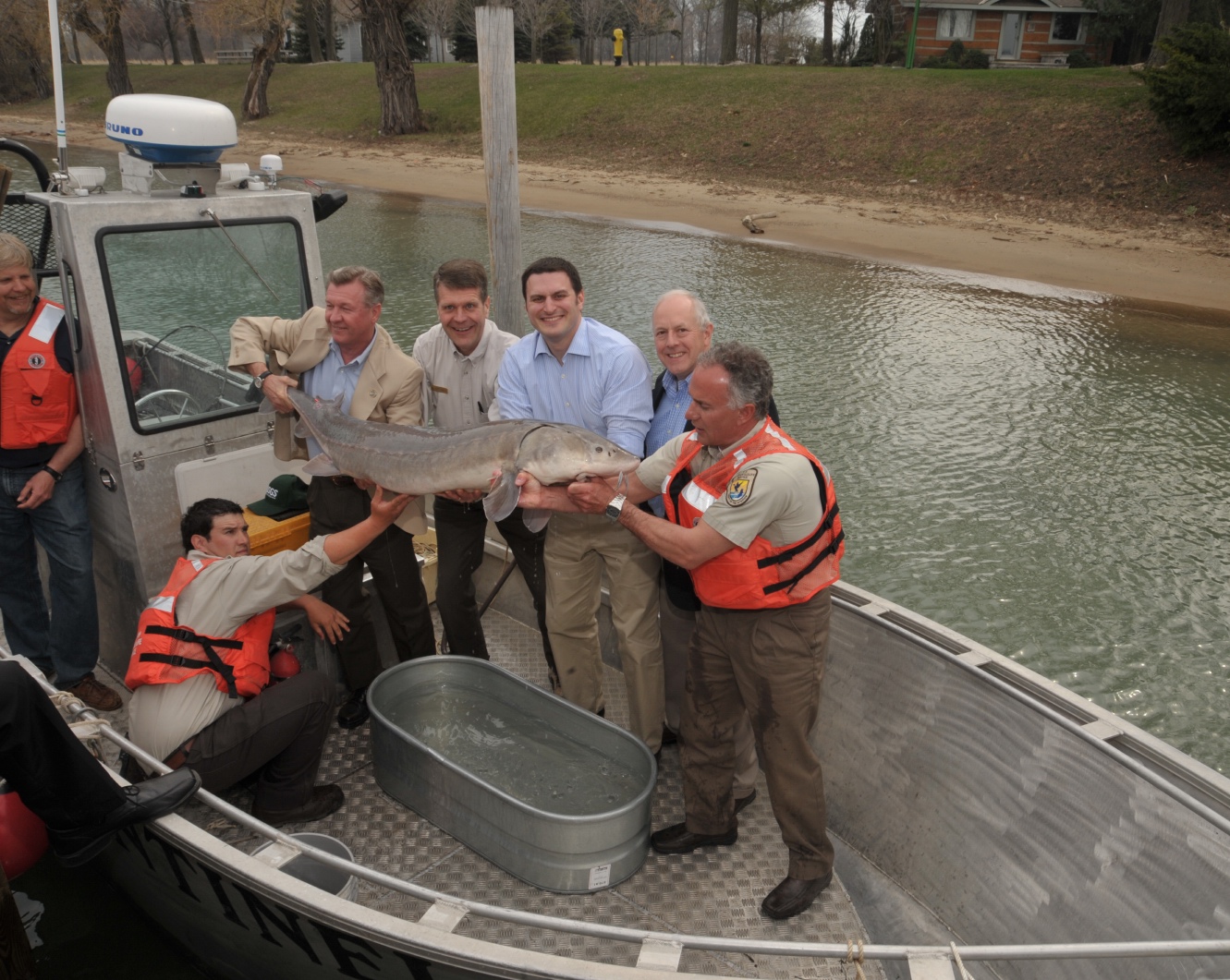
Great Lakes Moment is a monthly column written by Great Lakes Now Contributor John Hartig. Publishing the author’s views and assertions does not represent endorsement by Great Lakes Now or Detroit Public Television.
The practice of rewilding is frequently carried out in wilderness areas, but cities like Detroit are beginning to reintroduce native species of plants and animals to enhance biodiversity and reap all the benefits of making nature part of everyday urban life.
Rewilding aims to restore ecosystems and reverse the decline of biodiversity by allowing wildlife and natural processes to reclaim areas no longer under human management. Probably the most famous example of rewilding of a wilderness is reintroduction of wolves to Yellowstone National Park in 1995.
Since westward expansion first brought settlers and their livestock into the Yellowstone region in the 1800s, wolves had been villainized. Their crucial role in the balance of the Yellowstone ecosystem was not recognized. Wolf predation on animals like elk was viewed as “wanton destruction” of more desirable species.
In the late 1800s, predator control was enforced in Yellowstone National Park, including the poisoning of wolves. By the mid-1920s, more than 130 wolves had been killed in the park in the name of conservation. The last wolf pack was reported to have been killed in 1926. The absence of Yellowstone’s top predator reaped havoc within the wider ecosystem, including increasing the elk population that led to an overwhelming decline of plant species like aspens, willows and grasses as they were eaten up by the elk.
In 1995 wolves were reintroduced into the park, and this has helped parts of the ecosystem bounce back. Today, over 25 years after wolves were reintroduced, the elk population is significantly reduced, opening the door for willow, aspen, beaver and songbird populations to recover. Now scientists are celebrating the wolves’ successful return from extirpation – local extinction – as one of the greatest rewilding stories the world has ever seen.
Although cities were once as wild as Yellowstone, introducing top predator species to Detroit or New York City would not be practical. Instead, rewilding in urban areas looks quite different and often includes reintroducing native plant species or certain animals, building greenways or parks on vacant lots, incorporating green features into the design of new buildings, building green infrastructure to better manage stormwater and to enhance habitat, or simply allowing nature to reclaim space.
You might be surprised to learn that Detroit has become a leader in rewilding.

Cranes were spotted in Novi, Mich. (Photo Credit: Lillian Woolley)
Birds
Good examples of rewilding in Detroit are the reintroduction of peregrine falcons and osprey. In the 1960s, the peregrine population was experiencing complete reproductive failure in the Detroit River watershed because of egg-shell thinning caused by organochlorine pesticides. In response to wildlife and potential human health concerns, the pesticide DDT was banned in Michigan in 1969 and nationwide in 1972.
As part of the peregrine falcon recovery effort, five young were released in hacking boxes – wooden boxes designed to simulate nests – in downtown Detroit skyscrapers in 1987. After a slow start, reproduction picked up and now 30 peregrine young are fledged throughout metropolitan Detroit.
In the 1960s the osprey population in Michigan declined rapidly, and by 2002 there was only one active nest in southern Michigan. As part of conservation efforts, osprey was first reintroduced in metropolitan Detroit in the late 1990s. Today, thanks to banning certain pesticides and conservation practices, over 50 nesting pairs are found in southeast Michigan.
For over 25 years, starting in the early 1960s, no bald eagles were reproducing in metropolitan Detroit. Slowly they started coming back, thanks again to banning certain pesticides and conservation practices, to the point that by 2015 there were 29 active bald eagle nests in metropolitan Detroit.
Michigan’s native wild turkey population was decimated by overhunting in the 19th century. They were officially reported as locally extinct after a final sighting in Van Buren County in 1897. By the 1950s Michigan’s wildlife biologists began reintroducing these birds in southwestern Michigan. Today, Michigan turkeys are mostly descendants of birds trapped in Iowa, Missouri and Pennsylvania. A coalition of hunting groups, conservationists and the Department of Natural Resources has worked to bring turkeys back throughout the 20th century, but it was a concerted effort starting in 1983 that really rebuilt the population. Today, they are found in all counties in Michigan but are noticeable for expanding their range into urban areas like metropolitan Detroit.

A juvenile peregrine falcon sits on a nest box on the Fisher Building in Detroit. (Photo Credit: Barb Baldinger)
Fish
One thing that lake whitefish, lake sturgeon and walleye have in common is that they are all rock-loving spawners – meaning they spawn on rocks. Between 1907 and 1916, much natural limestone was blasted with dynamite and removed during the construction of Detroit River’s Livingstone and Amherstburg navigational channels, destroying spawning habitat and altering the river’s hydrology. Today, improved water quality and habitat – 10 spawning reefs have been constructed in the Detroit River since 2003 – are helping bring back these species.
During the late 19th and early 20th centuries, large numbers of lake whitefish entered the Detroit River in the fall to spawn. By the 1960s and 1970s lake whitefish abundance was at an all-time low due to overfishing, predation by and competition with invasive species, degradation of water quality and habitat, and the loss of a shrimplike food source called Diporeia. Researchers have documented lake whitefish spawning again in the Detroit River starting 2005, representing the first time since 1916.
During the late 1800s, the waters from Lake Huron to Lake Erie were one of the most productive for lake sturgeon in North America. Lake sturgeon then experienced a similar population crash due to overfishing, loss of spawning habitat and water pollution.
From 1970s to 1999 no lake sturgeon spawning was reported in the Detroit River. Then in 2001, lake sturgeon spawning was documented on a coal cinder pile near Zug Island in the Detroit River for the first time in over 20 years. U.S. Fish and Wildlife Service fishery biologists now estimate that the Detroit River’s sturgeon population is nearly 5,000 individuals.
Each spring, as many as 10 million walleyes leave the deeper areas of Lake Erie and ascend the Detroit River in search of rocky substrates to spawn on, creating a fishing frenzy known throughout North America. However, it was not always that way. In 1978, the Lake Erie Committee of the Great Lakes Fishery Commission declared the walleye population of Lake Erie to be in a crisis state due to overfishing, habitat degradation and water pollution. Today, the walleye population is four times the size it was in 1978 and walleye fishing brings in more than $1 million to local Downriver communities each spring. Also, professional walleye tournaments offer more than $500,000 in prize money.
It should be noted that although there has been considerable cleanup of the Detroit River, much remains to be done.

USFWS staff caught a lake sturgeon off of the Fighting Island reef. (Photo Credit: U.S. Fish and Wildlife Service)
Mammals
Beavers were extirpated from the Detroit River due to overharvesting during the fur trade era and was last reported in the Detroit River in 1877. River otter was extirpated in the early 1900s because of overharvesting during that same era and then loss of habitat and pollution from urbanization.
Beavers returned to the Detroit River in 2008 for the first time in 131 years and can now be seen in numerous locations in the watershed. Just this April, a river otter was seen in the Detroit River for the first time in more than 100 years.
Coyotes are native to North America, but not Michigan. They were first reported in southeast Michigan’s Washtenaw County in the 1890s. They naturally expanded their range and can now be found throughout Michigan, including metro Detroit. Coyotes are probably one of the most adaptive animals in the world. They have made urban and suburban habitats their own.
Plants
Loss of tree cover is a concern in most urban areas. Trees enhance habitat for other species, reduce water runoff during storms, absorb carbon dioxide, and serve as a natural air conditioner and sound buffer. Currently, 33% of metropolitan Detroit is covered in tree canopy, with a target to increase this to 40%. Since 1989 the nonprofit organization called Greening of Detroit has planted over 130,000 trees in Detroit, Hamtramck and Highland Park.
In 2015, Friends of the Rouge and Sierra Club came together to create a program called “Rain Gardens to the Rescue” to engage Detroiters in learning about, constructing and maintaining rain gardens to address stormwater issues and enhance habitat and the beauty of the community. Since the inception of this program, 81 rain gardens have been created across Detroit, including at houses, churches, schools and city parks. Friends of the Rouge has recently launched a new call to action for “1,000 Rain Gardens for the Rouge.”
The Stewardship Network is a nonprofit organization located in Ann Arbor that helps connect, equip and mobilize people and organizations to care for land and water in their communities, with an emphasis on Metro Detroit. In the 14 years of The Stewardship Network’s Spring Challenge, it has involved more than 20,000 people in removing 2.3 million pounds of invasive species, equaling $6.7 million in work hours.
When most people are outside, they may not notice hummingbirds, bats, bees, beetles, butterflies and flies carrying pollen from one plant to another as they collect nectar. But these hard-working animals help pollinate more than 75% of the world’s flowering plants and nearly 75% of our crops. Without pollinators, wildlife would have fewer nutritious berries and seeds to eat, and we would miss out on many fruits, vegetables and nuts, like blueberries, squash and almonds – not to mention chocolate and coffee, all of which depend on pollinators. Detroit Audubon encourages planting gardens with native plants to attract and support birds and pollinators.
Benefits of rewilding
Benefits of urban rewilding include enhancing ecosystem services or benefits and improving biodiversity.
But there are other benefits.
Dan Kennedy serves as refuge manager of the Detroit River International Wildlife Refuge – the only one of its kind in North America.
“It’s our vision to help connect Detroiters with nature and the outdoors,” said Kennedy. “Many people don’t know about the return of bald eagles, peregrine falcons, osprey, lake sturgeon, lake whitefish, beaver and otter to Detroit. Getting to see one of these unique species will help inspire a sense of wonder that can help develop a stewardship ethic.”
Another benefit of making nature part of everyday urban life is the proven positive impact of nature on human health – particularly for city-dwellers with less access to outdoor spaces. Indeed, Canadian doctors are now prescribing free passes to national parks to improve people’s mental and physical health.
Rewilding is teaching us about the power of nature to heal itself and in the process to help heal us. Rewilding helps rebalance ecosystems suffering from overuse and abuse. It is also a process that gives hope for our future.
Perhaps George Monbiot, British author and environmentalist, has stated it best: “If we have spaces on our doorsteps in which nature is allowed to do its own thing, in which it can be to some extent self-willed, driven by its own dynamic processes, that, I feel, is a much more exciting and thrilling ecosystem to explore and discover, and it enables us to enrich our lives, to fill them with wonder and enchantment.”
John Hartig is a board member at the Detroit Riverfront Conservancy. He serves as a Visiting Scholar at the University of Windsor’s Great Lakes Institute for Environmental Research and has written numerous books and publications on the environment and the Great Lakes. Hartig also helped create the Detroit River International Wildlife Refuge, where he worked for 14 years as the refuge manager.
Catch more news at Great Lakes Now:
Great Lakes Moment: Similarities between the Don and Rouge rivers, and one big difference
River otters return to the Detroit River
Featured image: Wild turkeys were spotted in Novi, Mich. (Photo Credit: Lillian Woolley)




